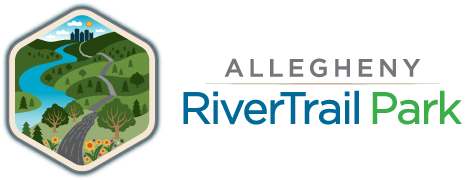From the Tribune-Review by Mary Ann Thomas, Friday, June 23, 2017
Since two young women drowned last month when their kayaks went over the Dashields Dam on the Ohio River — a fixed-crest dam that is almost invisible to upriver kayakers — government agencies and nonprofits have been scrambling to better educate the swelling numbers of paddlers on the Three Rivers.
The Army Corps of Engineers, which operates the locks and dams, held a summit Friday at Aspinwall Riverfront Park on the Allegheny River, where all of its eight dams from Pittsburgh to Bradys Bend in Armstrong County are fixed-crest dams.
Although there is ample signage and buoys alerting boaters, if they don’t pay attention and don’t know the details of area rivers, they could find themselves in the danger zone — too close to avoid being swept over a dam.
The current near the dams can be so strong that even a power boat won’t save you, according to Jeff Hawk, Army Corps spokesman.
Almost half of the Corps 23 dams on the Allegheny, Monongahela and Ohio rivers are fixed crest.
That is, they simply have concrete shelves that drop off to create navigable pools and a lock chamber, which is designed for commercial barges to move through the river system.
Although the Corps regularly deals with the region’s boaters and paddlers, the agency wanted to pull in government agencies and paddling groups to find ways to better educate paddlers about the special dangers posed by fixed-crest dams.
Operators of kayaks and canoes are not required to undergo safety training, although government agencies and nonprofits, like Kayak Pittsburgh, highly recommend all boaters take a safety course. They’ll learn how to read signs on the water and the rules of navigation, which includes making way for larger vessels.
Col. John P. Lloyd remarked Friday that, while the Corps wants to improve safety, the agency is limited because of its mission.
For example, Lloyd liked the idea of providing signage at boat launches to alert paddlers and others to nearby dams and other hazards.
But the Corps likely wouldn’t get funding for such project — but someone else probably can.
The summit’s participants included Venture Outdoors, the Coast Guard, the state Fish and Boat Commission, Alle‑gheny County Swiftwater/Flood Response Team, the City of Pittsburgh River Rescue and the Waterways Association of Pittsburgh.
All of these groups work on water safety, which was clearly demonstrated Thursday, when what initially looked like a boat was caught on the Highland Park Dam.
Although the object turned out to be a log, rescue agencies were coordinating a rescue within minutes of the call.
“Everyone is in this together,” said George McBriar, chief of the Blawnox Volunteer Fire Company and commander of the county’s swift-water rescue team.
McBriar said he already had been in touch with the Coast Guard and the Army Corps by the time his crew was on the water Thursday night, just minutes after getting the rescue call.
“The cooperation among agencies is unprecedented,” he said.
Safety suggestions
Since the fatalities at Dashields, the Corps installed seven additional buoys upstream of the dam and two buoys below it.
But summit participants fear that likely isn’t enough.
Everyone at the summit agreed paddlers need to be better educated.
No one knows more about the growing number of kayaks on Pittsburgh’s rivers than the Waterways Association of Pittsburgh, representing the commercial tug and barge traffic.
“We are running into problems with recreational boats like kayaks,” said Capt. David Podurgiel.
“It takes up to one mile to stop a tugboat with barges,” he said. “How close should a boat be? As far away as you can.”
Besides not being able to stop on a dime, tugboat operators have difficulty sometimes seeing kayaks at early dawn and dusk.
“We spend years learning the rules of the river,” he said.
Keeping a clear path and channel for larger boats like tugs with barges is the rule.
“Education needs to start at the docks, before people get onto the water,” he said.
Kayak Pittsburgh, a nonprofit promoting paddling by providing kayak rentals, has been educating paddlers since it first started offering paddling near PNC Park.
It also operates concessions at North Park and, most recently, at Aspinwall Riverfront Park.
Kayak Pittsburgh tells its paddlers to stay clear of the commercial channel, according to Joey-Linn Ulrich, executive director.
When Kayak Pittsburgh decided to open a concession for renting kayaks last year in Aspinwall, it knew it was a mile upstream from Lock and Dam No. 2 at Highland Park.
The group tells paddlers to avoid going downstream, toward the dam, Ulrich said.

